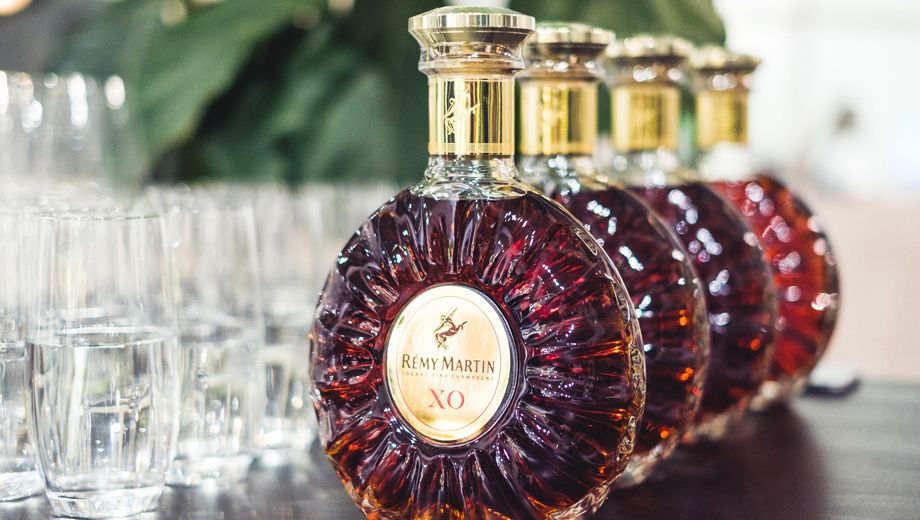Here's why brandy deserves a spirited second look

"How about a nip of brandy?' It's an invitation unlikely to conjure images of style and sophistication for many of us, but substitute 'cognac' for brandy and the reaction is likely to be very different.
Of course, cognac is a brandy, just as champagne is a sparkling wine and bourbon is a type of whisky.
Brandy is a broad church of spirits distilled from fruit, among which cognac is the most renowned and revered.
Like champagne, cognac is a French appellation for brandy made in accordance with strictly defined rules, in a specific wine-growing region.
The cognac production area is situated in the south west of France, around the city of Cognac, which gave the spirit its name.
The spirit or eau-de-vie must be double distilled from wine in copper pot stills using grapes of nine acceptable varieties, most commonly ugni blanc.
It must be aged in French oak, with four official quality grades defined by the length of maturation: VS (very special – minimum two years), V.S.O.P. (Very Superior Old Pale – minimum two years), XO (extra old – minimum ten years) or Hors d'âge (Beyond Age – typically used for older and more special cognacs).
France exports half a million bottles of cognac to Australia every year, and we have expensive tastes.
"What is unusual in Australia is that the market share of XO cognac is 31 per cent – worldwide it is 12 per cent," reveals Delamain Cognac's Olivier Jadeau.
A couple of hours south from Cognac is the Gascony region, home of France's lesser known brandy, Armagnac.
Armagnac differs from its famous sibling in various ways. It is traditionally distilled once only, using a specific type of column still, with a slightly different set of allowable grapes.
Other noteworthy grape-based brandies of the world include pisco, produced in Chile and Peru, and grappa, which is distilled from pomace (grape solids) in Italy.
'Fruit brandy' describes those spirits distilled from fruits other than grapes, such as calvados, an appellation for brandy distilled from apples or pears in the Normandy region of France.
As winter approaches, there's a compelling case for brown spirits enthusiasts to add some fine brandies to their repertoire.
Top shelf whisky is getting more expensive by the day, while luxury brandy is very keenly priced when you consider the maturity of the spirits and the craftsmanship involved.
Here are some fine brandies to sip this winter.
Delamain Pale & Dry XO Cognac ($150): One of the oldest and last family-owned and run houses in cognac, Delamain's origins trace back to the 18th century. Its entry level offering Pale & Dry is composed of spirit aged a minimum 25 years, yet it exhibits the signature Delamain freshness and lighter touch of oak.
Sullivans Cove XO Double Cask Brandy ($190): Best known for its world-beating single malt whiskies, Tasmania's Sullivans Cove has recently begun releasing a series of impressive brandies. The Double Cask is a marriage of spirits matured in French Oak ex-tawny and American oak ex-Bourbon casks for between nine and ten years.
Charles Oates Fine Apple Brandy – Muscat ($95 for 300ml): Willie Smith's Cider is putting a Tasmanian riff on calvados with the exquisite Charles Oates range. Aged in an ex-Muscat barrel, this most recent release offers an array of floral and spicy notes to complement the fruit.
St Agnes XO Imperial 20 Year Old ($200): Australia's own St Agnes Distillery continues to win global acclaim for its brandies, which follow the cognac production method of double-distillation in a copper pot still. The minimum age may be 20 years, but the oldest component was distilled in 1970.
Remy Martin Louis XIII Cognac ($3,699): The pinnacle of the Remy Martin cognac range, Louis XIII has been blended from 1200 different eaux-de-vie aged a minimum 40 years. As for that stratospheric price: consider the heady price that a reputable Scotch whisky of this age could command.

Hi Guest, join in the discussion on Here's why brandy deserves a spirited second look